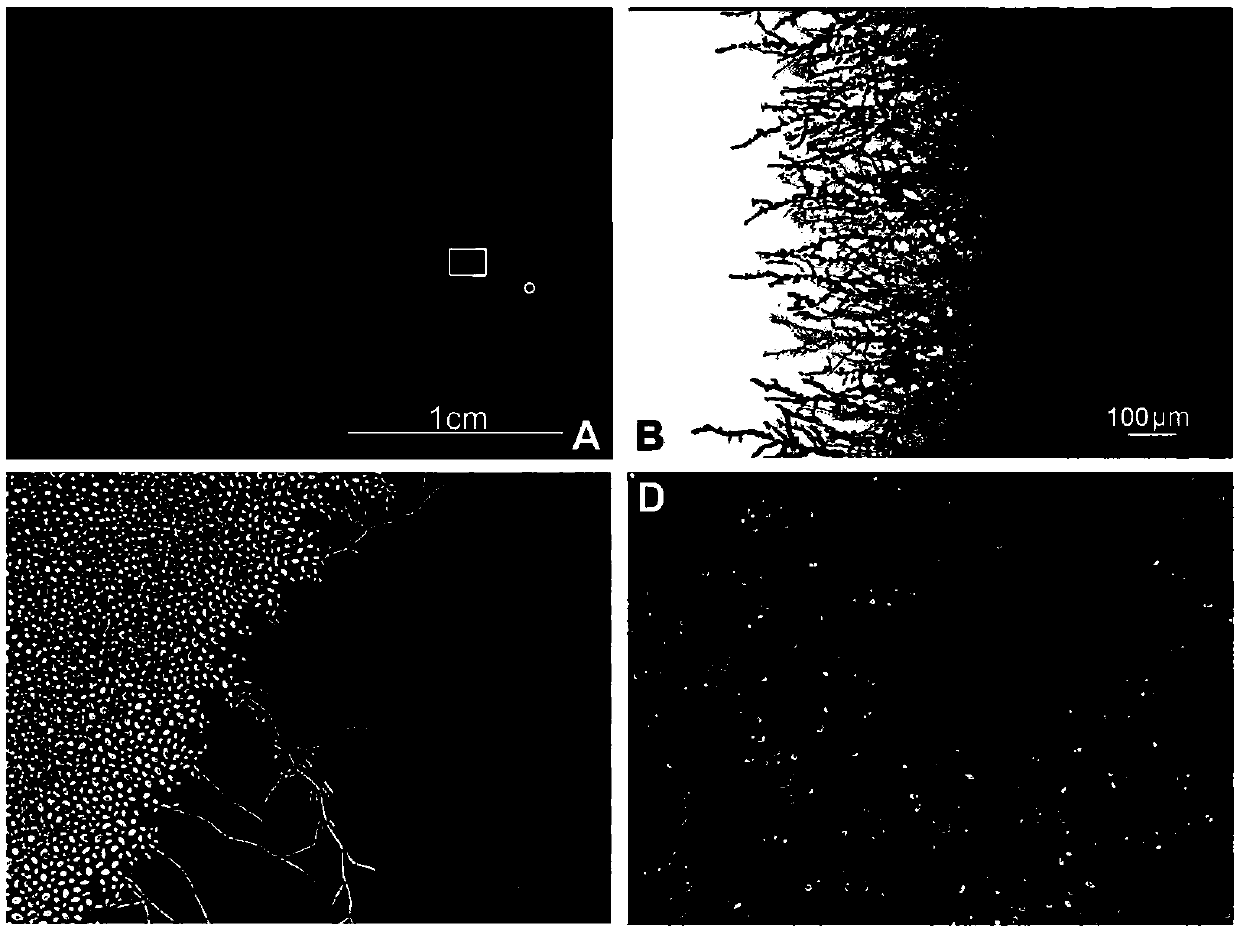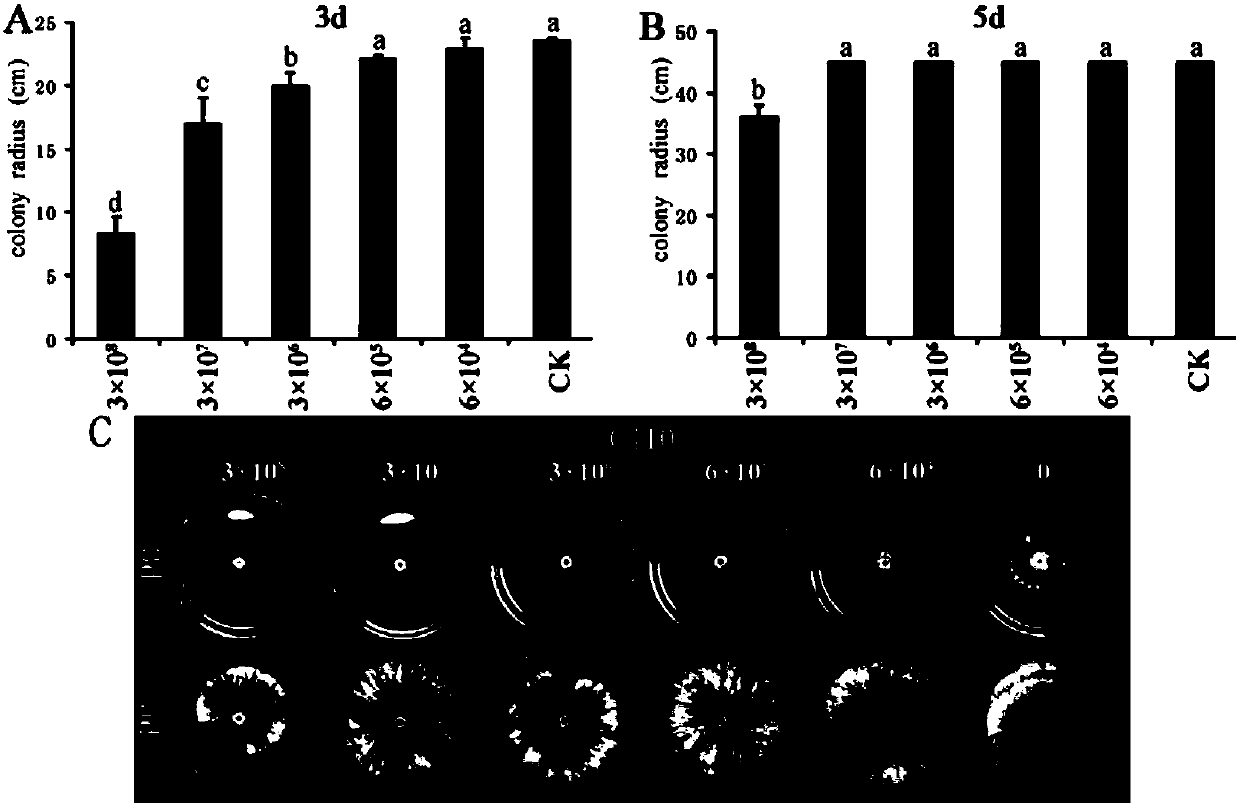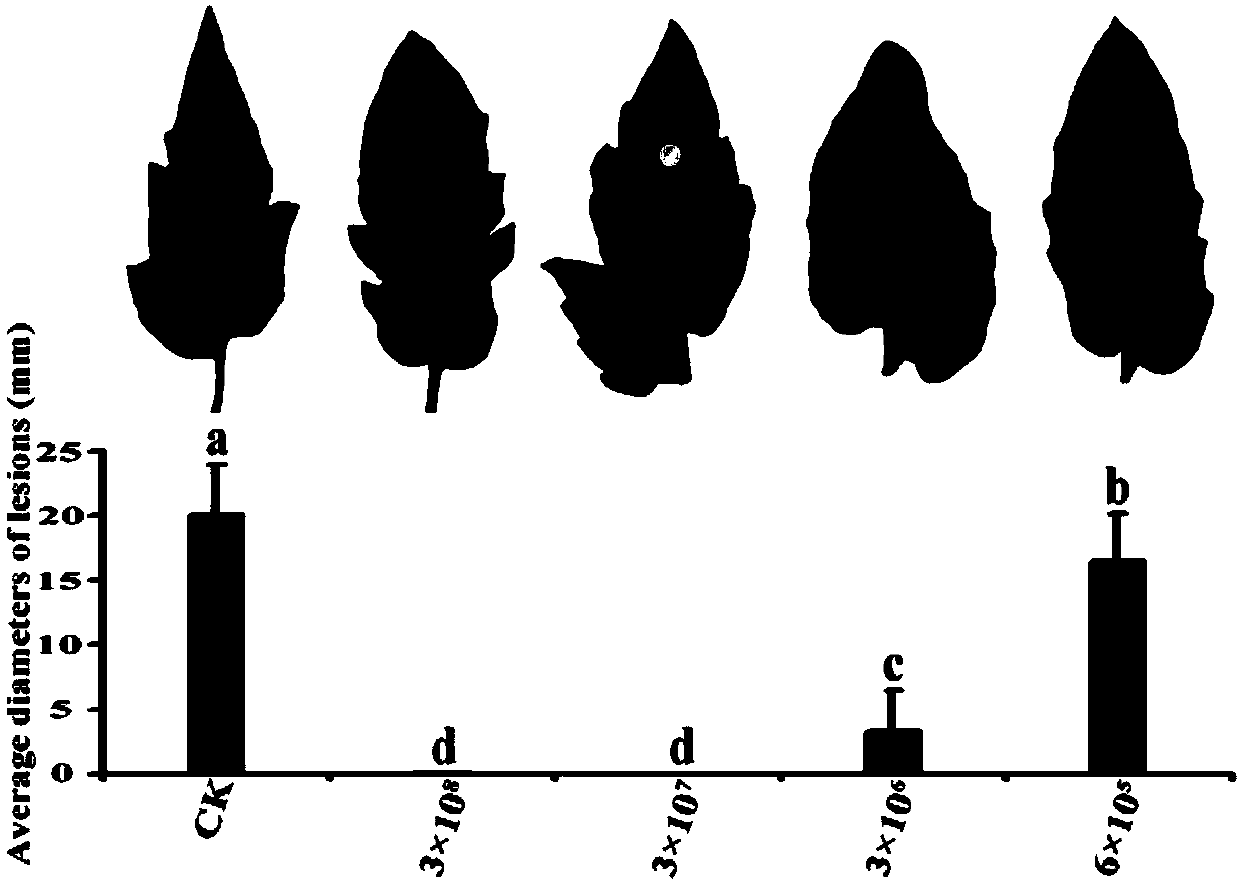Biocontrol bacterium candida intermedia C410 for preventing and controlling gray mold and suspending agent and application thereof
A technology for Candida and gray mold, applied in the application, biocide, fungicide and other directions, can solve the problem of no biological control of gray mold, etc.
- Summary
- Abstract
- Description
- Claims
- Application Information
AI Technical Summary
Benefits of technology
Problems solved by technology
Method used
Image
Examples
Embodiment 1
[0046] Example 1: Isolation and identification of Candida intertype C410 strain
[0047] 1. Isolation of strains
[0048] The microorganism is a strain of Candida intertype isolated from healthy strawberry leaves in Wuhan, Hubei. The separation method is as follows: take 10g of healthy strawberry leaf samples, cut them into pieces, put them into a sterilized mortar, add 10mL of sterile water containing 0.2% Tween-20, grind them repeatedly to a paste, and then use sterile water Diluted 10 times, 100 times, 1000 times respectively. Filter the diluted solution with two layers of sterilized gauze, and apply the filtrate on a PDA plate containing 0.01% streptomycin, 100 μL / dish, 5 dishes for each concentration, 15 dishes for each sample treatment, at 20°C Cultivate for 2-3 days, pick a single colony and streak it on a fresh PDA plate containing 0.01% streptomycin for purification, and then pick a single colony. The isolated yeast strain is inoculated by streaking on one side of ...
Embodiment 2
[0051] Embodiment 2: the inhibitory action of candida intertype C410 bacterial strain cell suspension to Botrytis cinerea conidia
[0052] In the center of the YPDA plate, use a 5mm diameter puncher to remove the medium to obtain a hole, and pipette 20 μL of different concentrations (3×10 8 , 3×10 7 , 3×10 6 , 6×10 5 and 6×10 4 CFU / mL) of C410 cell suspension was added dropwise to the wells of each dish, and then 20 μL Botrytis cinerea conidia liquid (2×10 5 spores / mL) into the holes of each dish, and the control treatment was to add 20 μL sterile water and 20 μL gray mold conidia liquid (2×10 5 spores / mL). Then put the petri dish under the condition of 20 ℃ for cultivation, observe the colony growth of Botrytis cinerea in the petri dish on the 3rd and 5th day respectively, and record the diameter of the colony by the cross method ( figure 2 ).
Embodiment 3
[0053] Embodiment 3: the inhibitory action of candida intertype C410 strain cell suspension to tomato leaf gray mold
[0054] Tomato material for testing: cooperation 903 (tomato king). Fresh tomato leaves were collected and rinsed with distilled water. After the water droplets on the surface were air-dried naturally, they were placed in a square box covered with moist absorbent paper, and sterilized filter paper pieces with a diameter of 5 mm were dipped in different concentrations (3×10 8 , 3×10 7 , 3×10 6 , 6×10 5 and 6×10 4 CFU / mL) of C410 cell suspension was covered in the center of the leaves, and then 20 μL of Botrytis cinerea conidia liquid (2×10 6 spores / mL) were dropped onto each filter paper sheet. On the filter paper, only 20 μL of Botrytis cinerea conidia solution (2×10 6 spores / mL) were treated as the control. Cover the mouth of the box with plastic wrap, place it under the condition of 20°C for cultivation, observe the incidence of botrytis cinerea on eac...
PUM
 Login to View More
Login to View More Abstract
Description
Claims
Application Information
 Login to View More
Login to View More - R&D
- Intellectual Property
- Life Sciences
- Materials
- Tech Scout
- Unparalleled Data Quality
- Higher Quality Content
- 60% Fewer Hallucinations
Browse by: Latest US Patents, China's latest patents, Technical Efficacy Thesaurus, Application Domain, Technology Topic, Popular Technical Reports.
© 2025 PatSnap. All rights reserved.Legal|Privacy policy|Modern Slavery Act Transparency Statement|Sitemap|About US| Contact US: help@patsnap.com



